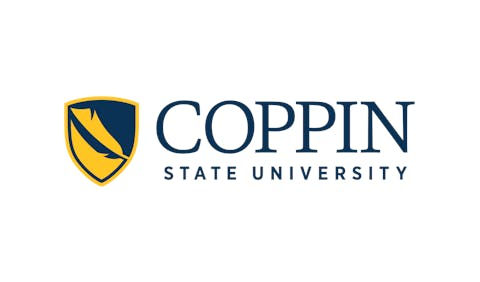A  Dr. Joshua Travis Brown
Dr. Joshua Travis Brown
What sounds like plots ripped from Hollywood scripts are the actual founding stories of three tuition-driven universities. In fact most such schools boast similarly fraught origins. But what is equally striking is that regardless of their particular focus, these institutions also share a drive to sustain their mission in innovative ways amid the pressures of remaining competitive in a tightening enrollment market. I argue in my book Capitalizing on College that the way forward for these “value entrepreneurs” must include recognizing they are not alone and that their similarities are greater than their differences.
A shared vision among differences
The tuition-driven sector is as diverse as the American population it serves. From historically Black colleges and universities (HBCUs) and predominantly Black institutions (PBIs) that engender Black identity and women’s colleges that promote empowerment to Tribal colleges and universities (TCUs) that pass on Native American cultures and religious schools that develop faith, tuition-driven institutions strive to provide educational access to often unseen students. These are students who matriculate at Hispanic-serving institutions (HSIs) and Asian American and Native American Pacific Islander Serving Institutions (AANAPISIs) committed to expanding opportunities and reducing barriers and who graduate from regional colleges and universities (RCUs)—known as “people’s universities”—renowned for their commitment to teaching.
The diversity across the tuition-driven sector might suggest a lack of common ground, but in reality, these institutions have far more in common with one another than with the Ivy League. Indeed, for the many different schools in this sector, their dedication to the common good has led them to embrace what I describe as value entrepreneurialism—a common valuing of relationships and a commitment to innovation that is inseparable from their mission.
The relational emphasis found at these schools is a fundamental component of their approach, where words like “community” and “family” are foundational to how they develop students. The president of one tuition-driven school spoke for many when he said that “relationships are at the center” of everything they did. At the same time, innovation was valued at these schools for how it allowed them to fulfill their entrepreneurial vision of nurturing connections: “The culture for us has always been innovation—to keep looking at where we need to be and how to serve our students,” a professor at the same institution explained to me.
However, leaders of tuition-driven institutions were also constantly challenged to balance mission and margins: “At the end of the day you cannot have a mission without the resources to fulfill it,” offered one provost I spoke to. Another vice president put it this way: You want to have those values and keep that culture, but at the same time, from a business perspective, you need to make decisions that allow the university to continue. It’s the old saying: ‘No money, no mission.’
Rather than relying on elite endowments to sustain their mission, tuition-driven schools embraced their foundational spirit of innovation and their commitment to value entrepreneurialism as a means for carrying them forward—not just in terms of their mission, but financially as well. Their leaders told me time and again that in the face of shifting landscapes and financial pressures, they adopted entrepreneurial strategies in pursuit of non-traditional enrollment growth to sustain their mission. “The founders came here on an ox-pulled cart and developed all this,” one administrator told me, pointing across the campus. “You don’t think that was innovation… looking forward and responding to a need? I think we are still continuing that!” At another institution, a dean explained how a blend of purpose and innovation influenced how its leaders envisioned themselves and their school: “We see ourselves as being individuals that are innovative—individuals that like to think and dream outside the box.”
A call for cooperation
For too long, tuition-driven schools have operated in isolation from one another, perhaps not recognizing their fundamental kinship across differences of region, religion, and focus. Yet in this challenging moment for higher education, their shared identity as value entrepreneurs offers a powerful foundation for cooperation. What might this look like in practice?
First, tuition-driven institutions should explore forming shared resource consortia across institutional boundaries. While each campus maintains its distinct mission and culture, neighboring mission-aligned schools could combine purchasing power for essential services, share specialized faculty appointments, or develop joint academic offerings in high-cost disciplines. Such partnerships would allow schools to honor their individual missions while acknowledging that not every institution needs to build every program from scratch. These consortia represent value entrepreneurialism in action—preserving mission through innovative resource stewardship.
Second, cross-institutional innovation hubs could become powerful engines for collective problem-solving. Rather than each campus struggling alone with enrollment challenges, student support systems, or technological adaptation, dedicated centers could bring together creative minds across tuition-driven institutions. Tuition-driven schools are responding to similar pressures with similar values; there’s no reason why they shouldn’t innovate together as well. These hubs would mirror the relational emphasis that distinguishes these institutions, creating communities of practice centered on shared values rather than competition.
Finally, tuition-driven institutions should collectively reframe the narrative around higher education excellence. Instead of pursuing the prestige metrics that favor elite institutions, these schools could collaborate to develop alternative rankings and public messaging that showcase their distinctive strengths. As administrator after administrator told me, the traditional rankings weren't designed for schools like theirs. Tuition-driven schools need to stop apologizing for what they aren’t and start championing what they are.
Tuition-driven institutions were born of audacious innovation against formidable odds. Their continued survival demands an equally bold step: writing their next chapter not as competitors, but as collaborators.
Dr. Joshua Travis Brown is an Assistant Professor at the Johns Hopkins School of Education as well as a Research Fellow with the Center for Skills, Knowledge and Organizational Performance (SKOPE) at the University of Oxford. His new book, Capitalizing on College: How Higher Education Went From Mission Driven to Margin Obsessed, is available through Oxford University Press.
















